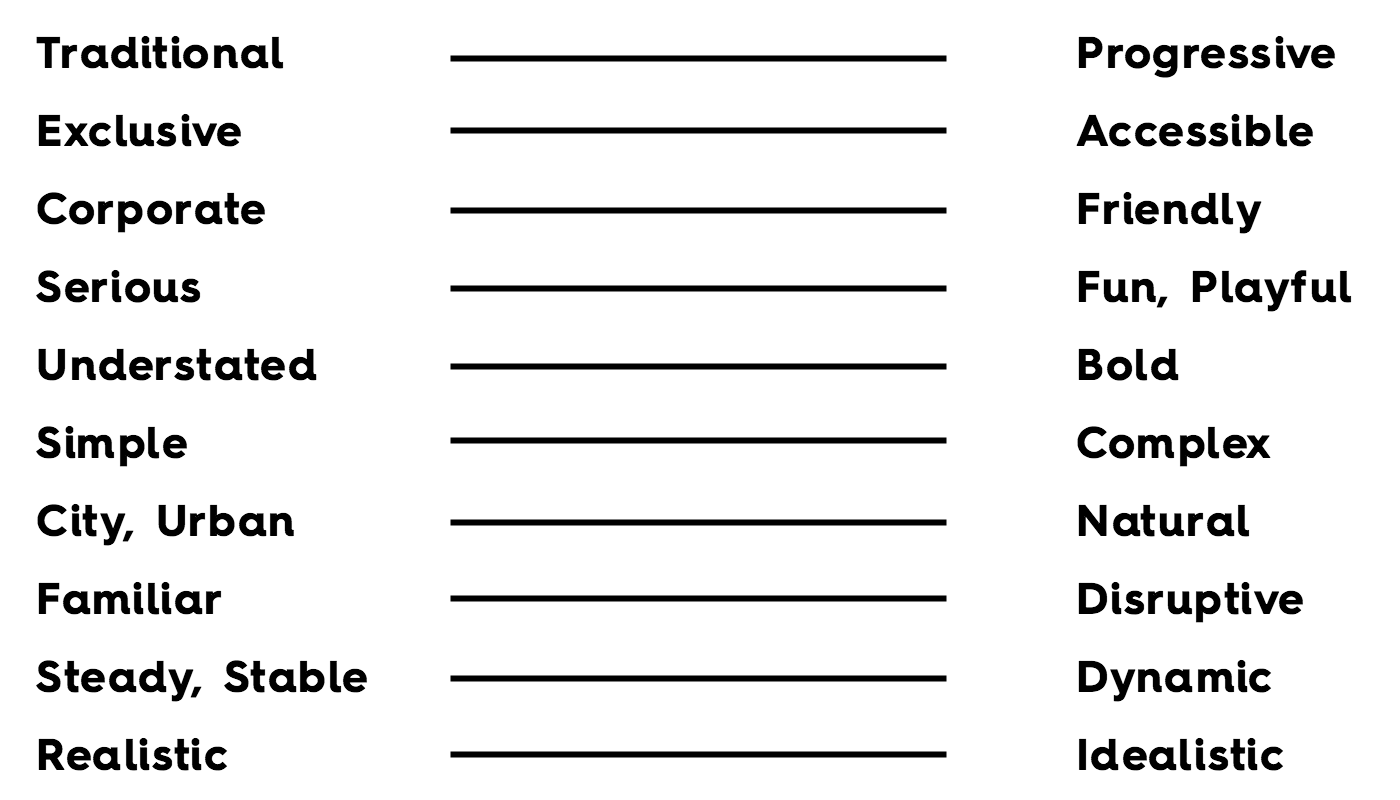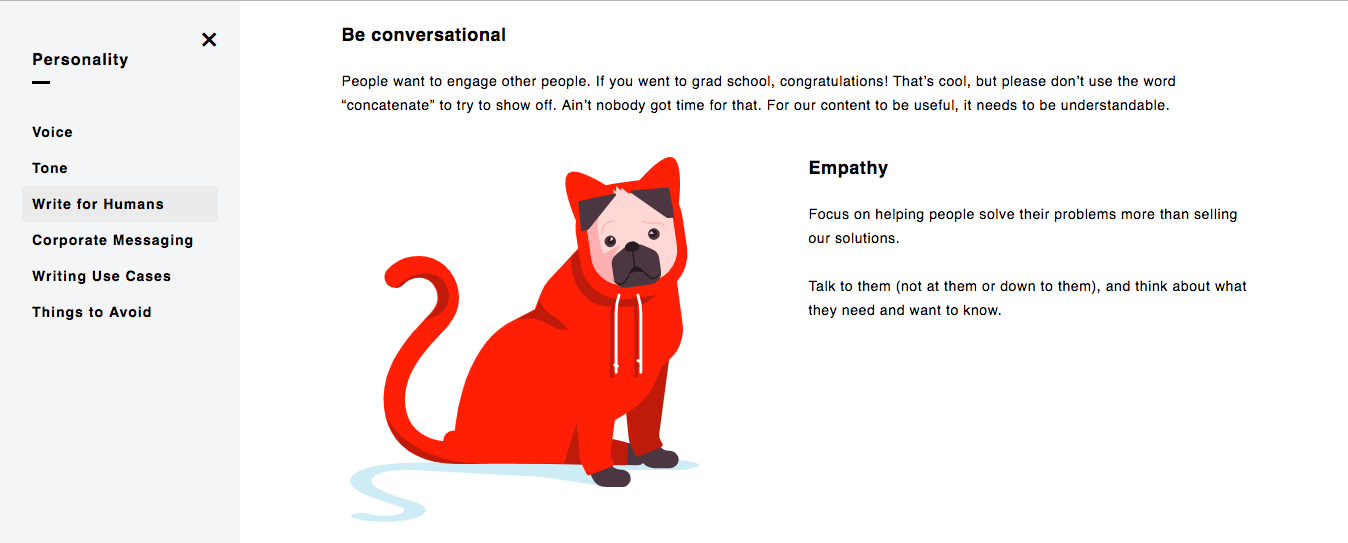Whether you’re building a brand from scratch or embarking on a major rebrand, remember that your visual identity is not the only important thing to focus on. Before you dive into your logo, you need to know who you are and how you communicate, specifically what your brand voice is. What’s your personality? What language do you use? What vibe do you want to give off?
As we know, it’s not just about what you say but how you say it. Your brand voice can greatly influence people’s first impression of you (as well as how your messages land with them). That’s why it’s important your brand voice accurately reflect who you are.
Of course, identifying your brand voice isn’t the easiest thing to do. It requires deep reflection and an intimate understanding of who you are. (We know this because we’ve gone through the process many times.) Luckily, in that time we’ve identified a few useful questions that make it easier to find your brand voice, so we thought we’d share them with you today.
These thoughtful questions will help you distill your essence, identify who you are and aren’t, and figure out how to verbalize it. But before we walk you through them, there are a few things you need to nail down before you start.
3 Things You Need Before You Find Your Brand Voice
Many brands make the mistake of diving right into brand voice brainstorming without really taking the time to think about the larger picture and how their brand voice fits into it.
You don’t just choose your brand voice on a whim. To really hone in and refine it, you need a deep, intimate understanding of who your brand is and what it’s trying to achieve. So, before you gather your team together, make sure you’ve covered the basics of brand strategy.
1) Your brand heart: Your brand heart is an articulation of your core beliefs, specifically your:
- Purpose: Why do we exist?
- Vision: What future do we want to help create?
- Mission: How do we create that future?
- Values: Who are we? How do we work?
This is the core of who you are. Your brand voice is simply a tool to express it. (For example, if your organic snack brand is all about saving the planet and building community, your brand voice probably wouldn’t be snarky and sarcastic.)
2) Personas: Who are you trying to attract? Personas help you identify who these people are. This is important for your brand voice because you want to speak in a way that connects with them.
3) Competitive analysis: You don’t want to sound the same as your competition, so it’s important to know who you’re competing with and how to differentiate.
Once you have a deep understanding of your brand’s DNA you can start to think about how to express it through your brand voice.
7 Questions to Find Your Brand Voice
Figuring out your brand voice can be a frustrating process if you try to knock it out in one free-for-all brainstorm. (That’s usually a recipe for disaster, as everyone has an opinion.) Instead, we find it helpful to start the process with guided conversations. A few tips here:
- Make sure everyone who needs to be in the room is in the room, whether it’s the brand team, founder, or other key stakeholders.
- Designate a point person to lead the conversation and collate feedback.
- If you want to poll a larger group (e.g., a 40-person department), which can sometimes be helpful, get those answers before you begin these focused brainstorms.
Throughout the process, listen not just to what the people in the room are saying but how they’re speaking to each other—the tone, phrases, vocabulary, etc. Are you joking and lighthearted? Serious and to the point? That in itself may tip you off to your brand voice.
You can use the questions below to guide your conversations, or distribute them to your team as a formal survey. They are meant to help you hone in on your brand voice, articulate your attributes, and craft your brand voice guidelines for all communication.
1) When people interact with our brand, how do we want them to feel?
This is a helpful big-picture question to identify the emotional brand experience you’re trying to deliver. Your brand voice is an effective tool to cultivate that. Think of what your product or service does for people. How does it solve people’s problems or enhance their lives? Your voice should reflect and reinforce that. For example, if you’re a security company that wants to be perceived as a trusted protector, you’d want your voice to be confident and reassuring.
1) How would we describe our brand 3-5 adjectives?
This is a helpful way to encapsulate your brand voice attributes. It’s also a good question to ask a larger group. (Oftentimes you’ll see similar descriptors or themes arise in the answers.)
You might also ask them to mark an X on where they think the brand falls on the spectrum below:
(You can also try Portent’s Tone of Voice Generator, which will give you some great either/or questions to help you refine your identity.)
3) What does our competition sound like/how can we differentiate?
If everyone in your industry sounds the same or is trying to chase a certain trend or persona, you have a great opportunity to stand out. (Remember a few years back when a lot of brands were trying to emulate that Dos Equis Most Interesting Man in The World? That works for a beer company. A bakery? not so much.)
4) What is another brand with a voice we love?
This may be someone in your field or a totally different industry. You shouldn’t copy them, of course. But consider how and why their voice resonates with you. What can you learn from them? How can you elicit a similar emotion?
5) If our brand was a celebrity, who would we be?
You don’t have to pick one person; it can be an amalgamation. For example, a hip luxury suit maker might think of themselves as the younger brother of Jeff Goldblum and George Clooney.
6) How do we want to talk about ourselves?
Think of the way you describe what you do, the language you use, and the way you want to talk about yourself and your business. What type of vocabulary do you use? What phrases do your sales team tend to repeat? These can help you define and refine your brand voice.
7) Who do we NOT want to be/what do we want to avoid?
Knowing who you aren’t is just as helpful as knowing who you are. Are there buzzwords you hate? Phrases to avoid? Brands you loathe? Taking the opposite approach can ensure you stay true to yourself. (For example, as part of the marketing industry, we are very much over anyone with “social media guru” in their bio.)
Once You Know Your Voice, Turn It Into Plain English
If you want people to be able to communicate in your brand voice, you need to give them clear directions to do it. Identify the attributes (say, five words) to describe it, as well as directions for tone, vocabulary, language, etc. Try to write those guidelines in your brand voice, and include plenty of real-world examples.
You can also take a look at Column Five’s brand guidelines, which offer use cases, plus other tips on how to use our brand voice. For example, here’s a snapshot of our writing guidelines:
Once you have these items articulated, you can flesh out the rest of your verbal identity, including:
- Brand positioning: What differentiates you in the marketplace, or how you are different from your competitors.
- Value proposition
- Tagline

